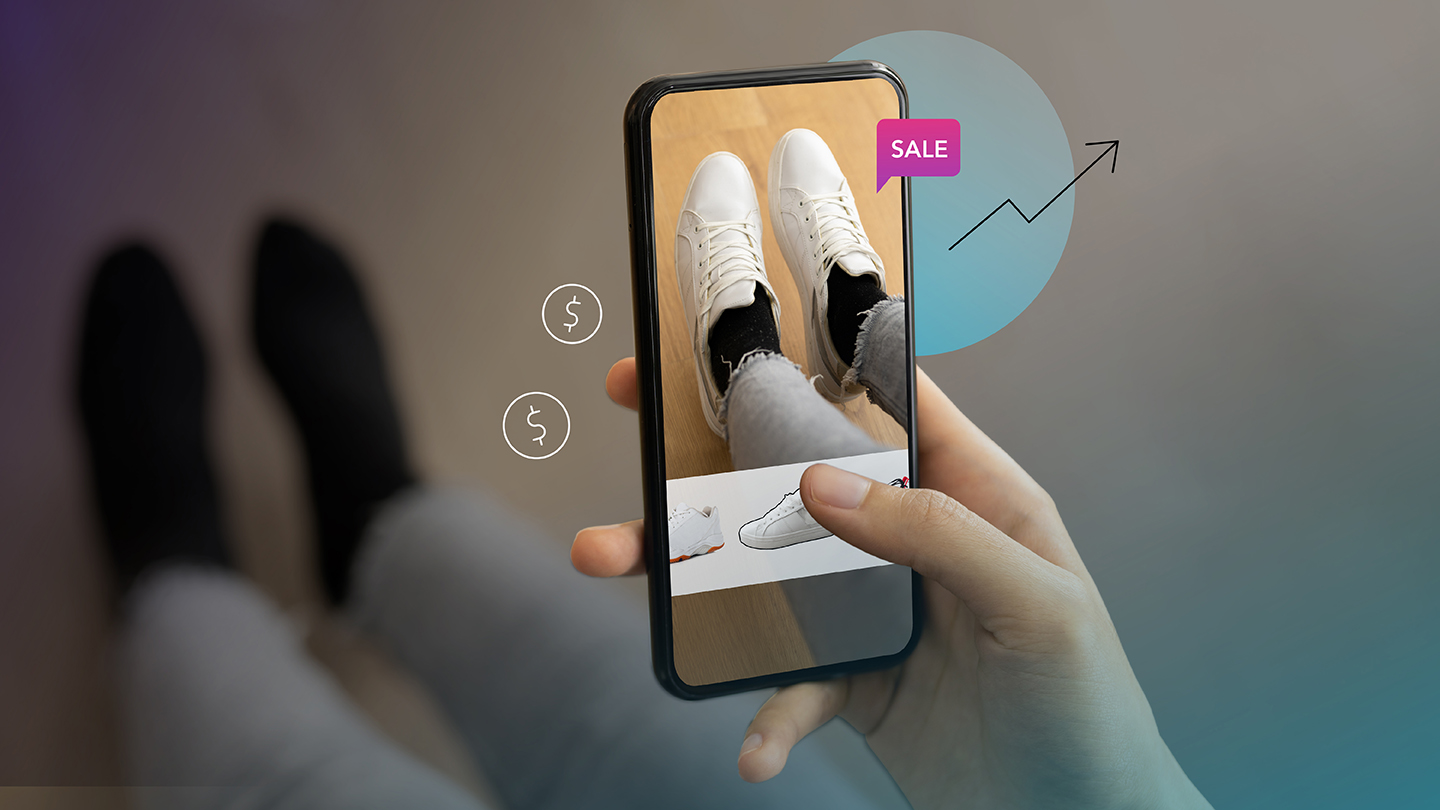Augmented Reality (AR) has been and still is a fast-growing segment in the mobile landscape. According to MarketsandMarkets, the global mobile augmented reality market is projected to grow to $29.5 billion by 2025 with a CAGR (Compound Annual Growth Rate) of 31.1%. And studies have shown that AR use will continue to grow, particularly among Millennials and Gen Z.
But while AR is poised to grow significantly in the years ahead, much of its potential is untapped as a landscape rife for innovation and opportunity.
First, there are many realities
Augmented Reality is also sometimes called Extended Reality, which is a universal term that includes Augmented Reality, Mixed Reality, and Virtual Reality. (For the purposes of this article, we’ll just be using AR.)
Apple launched ARKit, its first augmented reality platform, in 2017. Google followed shortly thereafter in 2018, launching its augmented reality platform, ARCore. Since then, both Apple’s and Google’s AR developer kits have continued growing and adding new capabilities.
- ARKit 5 (Apple’s latest release) for example, adds location anchors and improvements to motion tracking, face tracking, and more.
- Google’s ARCore has added features such as publicly created photos for Street View that can be used with Google Maps and augment images taken by specialized image capture devices.
And then there’s WebAR
A technology that may further popularize and proliferate AR development is WebAR, which allows AR experiences to be delivered through any web browser on any device. The key advantage to WebAR is that users don’t need to spend time downloading an app to use it; however, limitations such as memory and browser performance can limit WebAR experiences and they can’t provide the level of experience that a dedicated AR app can deliver.
Regardless, according to a study by ARtillery Intelligence, WebAR holds significant promise and the highest growth potential for AR.
Going beyond gaming
We love capturing virtual critters and knocking down virtual stuff just as much as anyone. But while mobile games such as Pokemon Go and Angry Birds AR: Isle of Pigs use AR to entertain us, much of AR’s potential is still emerging.
AR is already a proven tool for m-commerc, and booms in e-commerce and online shopping have sent retailers looking for new and better ways to help customers evaluate their products to ease the uncertainties of shopping for things like home furnishings (using apps like Wayfair and IKEA) and clothes (like Wanna Kicks shoes).
But the investment AR can definitely pay off. In 2017, Houzz, an online home remodeling and design platform, launched its initial version of View in My Room 3D within its app for iPhone and iPad in May 2017. Two years later, they reported more than two million people using AR when buying products in the Houzz app. In addition, users were 11x more likely to make a purchase and spent 2.7x more time in the app.
The sky’s the limit
AR still has countless commercial and industrial uses for mobile devices (phones, tablets, etc.) as well as specialized wearables and more. Consider just a few more examples:
- Visionsafe has created a mask with AR tech to deliver oxygen and provide an AR version of the pilot’s cockpit so the pilot can still see in a smoke-filled cockpit.
- Mission to Mars gives users a variety of AR experiences based on actual Mars rover expeditions, launches, and more to educate and entertain users.
- Mondley, a mobile app, uses AR to teach new languages.
- Accuvein uses AR technology to help medical practitioners find a vein so at least you don’t have to get stuck more than once.
- GigXR recently partnered with Elsevier, a global educational publication house, to create HoloHuman, an MR (Mixed Reality) application that provides an interactive anatomy that can be viewed by regions with 11 different systems and more than 4,500 structures –– including the ability to view multiple systems simultaneously and overlay them in any combination.
- AR Runner gamifies fitness activities to make getting in shape more fun.
- Hyundai’s Virtual Guide app gives users an interactive user manual for their vehicles. BMW Virtual Wiewer allows potential customers to kick the (virtual) tires on select models and picture the vehicle in their own driveway. At a broader scale, Tradiebot has been working on WorxAR, a platform for developers to deliver context-sensitive information through AR for potentially limitless applications but with an emphasis on things like car repair, maintenance, and more.
AR can even bring people together in the real world
While it may be counter-intuitive to think that AR can bring people together in the real world, popular games Pokemon Go can bring players together in the real world to participate in group events. In addition, some recent, forward-thinking developers such as Octi are trying to build a fully AR-based social media platform.
Fair to say, however, that Pokemon Go had a lot working in its favor — a well-known and popular entity backed by a large, popular company with money to burn — prior to making a splash in AR. Regardless, it still showed us that the social aspect of AR can help drive popularity. Once players reach Level 5 in the game, for example, they can join teams, and the game forces players to walk in the real world to find various characters. And organized, real-world Pokemon Go Events continue to attract thousands of registrants.
Ripe for innovation
There’s no simple formula for predicting the cost to develop a mobile app or a mobile AR app, but AR apps generally require additional development and integration with things like geolocation and map services, such as a license for Google’s API.
But as a very (overly) simple comparison, consider that Rovio’s original Angry Birds cost about US $140,000 to develop, and the AR-powered Pokemon Go is estimated to have cost around US $500,000–$600,000 to develop.
Both went on to generate massive profits for their creators –– and also proof you don’t need AR to be successful. Regardless, the AR market is still ripe for innovation and hungry for someone to bring the next “big thing” to capture its ever-growing audience and potentially reap the rewards.








